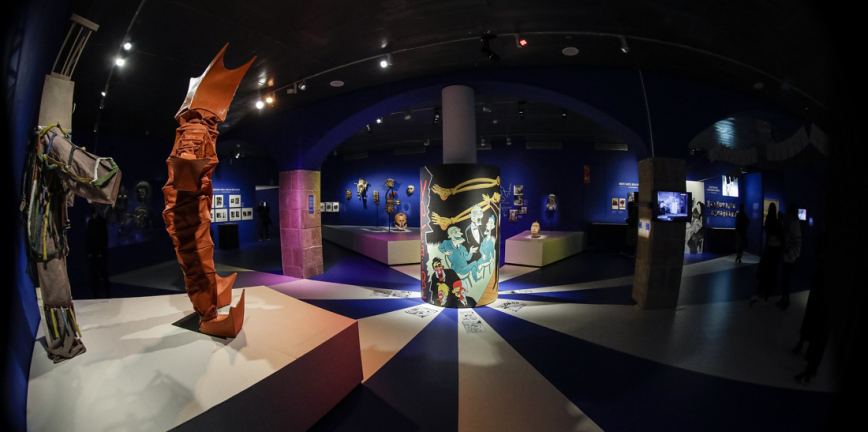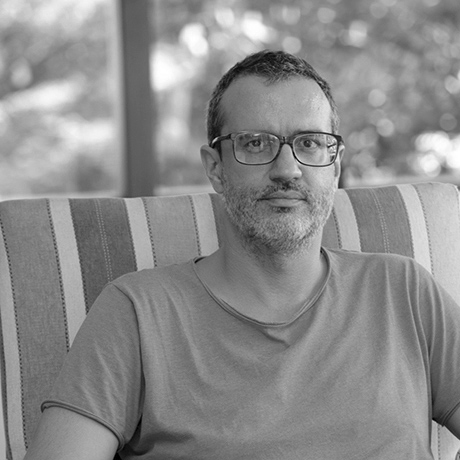A mask is just as human as a face
- Culture Folder
- Exhibitions
- Mar 22
- 4 mins

La màscara no menteix mai [The Mask Never Lies], the exhibition at the CCCB curated by Servando Rocha and Jordi Costa, displays an exhaustive inventory of the possibilities, meanings and functions that, over the last century and a half, the act of wearing a mask has represented.
A mask is always used to hide the face, but this concealment can have multiple meanings, depending on the circumstances, needs and intentions at play. The mask worn by a well-off white supremacist is not the same as that of a poor, marginalised black man, nor does the mask of a curandero healer in Alaska carry out the same social function as those of a group of anti-Putin dissidents in today’s Russia, so it is obvious that their masked faces are not equivalent, either. It is also obvious that they are not wearing masks for the same reasons, in pursuit of the same goals.
One of the virtues of La màscara no menteix mai [The Mask Never Lies], the exhibition at the CCCB curated by Servando Rocha and Jordi Costa based on the book written by the former and titled Algunas cosas oscuras y peligrosas [Some Dark and Dangerous Things] (Editorial La Felguera, 2019), is that it displays an exhaustive inventory of the possibilities, meanings and functions that, over the last century and a half, the act of wearing a mask has represented.
A mask can hide the identity of both the villain who wants to commit evil acts without being held accountable by the justice system and the hero who wants to prevent them from doing so.
And exhaustive, here, can also mean contradictory. Because a mask can hide the identity of both the villain who wants to commit evil acts without being held accountable by the justice system and the hero who wants to prevent them from doing so. Likewise, rebels wear masks to avoid being crushed by tyranny, while tyrants’ henchmen also cover their faces to crush opponents more easily. This is not a paradox: it is simply the versatility of something so familiar to us that can be used for everything. There are masks used for reinforcing and ritually perpetuating a meaning and a world order, like those used in Masonic lodge ceremonies, and others that aim to take a world order apart and show that nothing has meaning, as in the case of Marcel Janco and the Dadaist shows at the Cabaret Voltaire.
Seven areas
The exhibition is divided into seven areas. Though each of them has a more historical or political, artistic, anthropological, activist, or even pandemic-oriented angle, all of the areas present recurring motifs and deal with similar themes. And they do so from opposing yet complementary perspectives: the Ku Klux Klan’s racism, the Watchmen comic and series, the literary character Fantômas, the art of Magritte and Carrington, Pussy Riot and their balaclavas as they played and danced to punk music at Saint Basil’s Cathedral in Moscow, the eye-catching masks worn by Mexican luchadores, the protests led by Anonymous, the omnipresence of surgical masks due to Covid-19… The exhibition thus establishes an audiovisual, textual and iconographic dialogue around reworkings and manipulations of identity, around individuals’ relationships with power, around the infinite forms terror can take and around the sophistries of resistance.
 One of the rooms at the exhibition The Mask Never Lies, at the CCCB, filled with different kinds of masks.
One of the rooms at the exhibition The Mask Never Lies, at the CCCB, filled with different kinds of masks.© Martí E. Berenguer
It is striking, disturbing even, to see how polymorphic the mask as an object can be. It is everything, it can be everything, it can be used for everything.
In all honesty, it is striking, disturbing even, to see how polymorphic the mask as an object can be. It is everything, it can be everything, it can be used for everything: as a tool to exercise power brutally with impunity (like the hoods and tunics worn by the Ku Klux Klan); as an instrument to protect against the enemy’s weapons (WWI gas masks) or the carnage of a pandemic; as a way of invoking fantastical or atavistic realities (the demon masks seen at certain popular festivals in Catalonia); as a strategy to maintain anonymity and dodge increasingly all-embracing, invasive powers (the hoods used at feminist protests); as an attempt to reconstruct a disfigured physical identity, which, at the same time, is also a devastated moral and emotional identity (the facial prosthetics used for soldiers who were mutilated in the trenches); and for a host of other purposes. I have already said it: a mask is everything, it can be everything.
We might think otherwise – day to day, it is soothing to think otherwise – but masks are just as human as faces, even when they dehumanise us, when they make us transcendental, or monstrous, or heroic, or clandestine, or unique, or generic. Masks are human even when they dehumanise us, because after all, inhumanity is also part of the human condition.
La màscara no menteix mai [The Mask Never Lies]
Curators: Servando Rocha and Jordi Costa
Barcelona Centre for Contemporary Culture (CCCB)
Until 1 May
The newsletter
Subscribe to our newsletter to keep up to date with Barcelona Metròpolis' new developments




